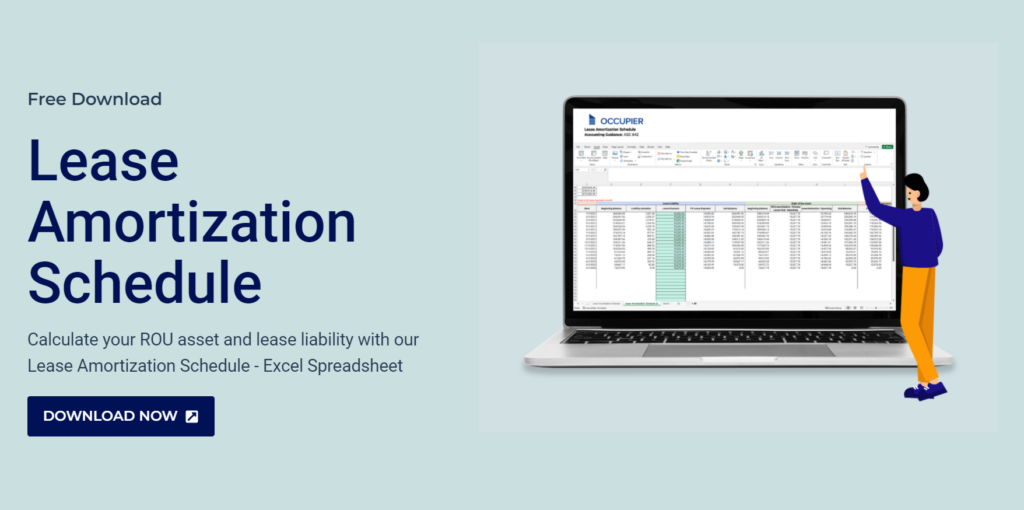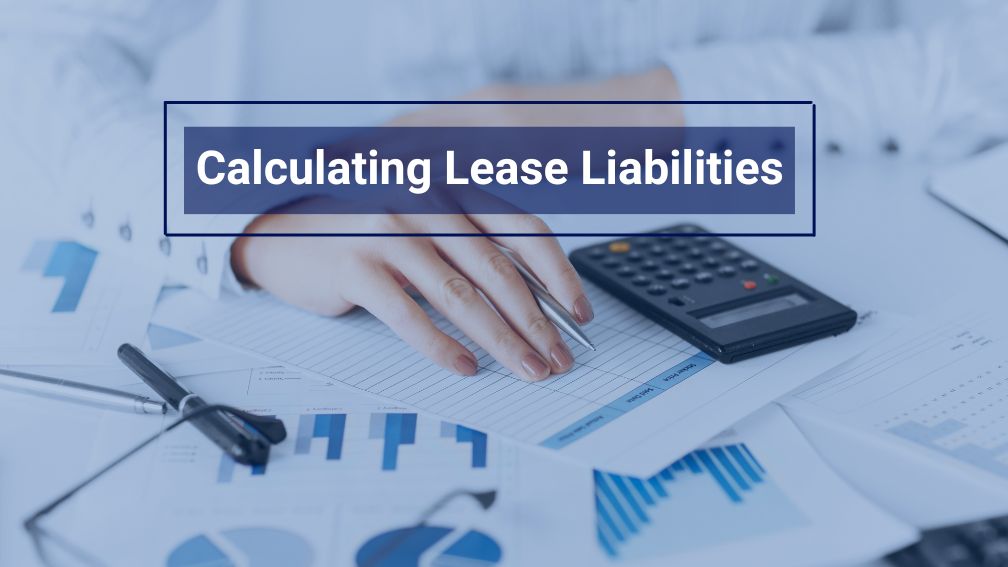Learn How to Calculate Lease Liability With This Step-by-Step Guide
Last Updated on February 9, 2023 by Morgan Beard
One of the major changes that came with the transition from ASC 840 to ASC 842 was that leases must be included on the lessee’s balance sheet, regardless of classification. Whereas ASC 840 only required capital leases to be recognized on the balance sheet. ASC 842 now requires that both finance and operating leases receive the appropriate accounting treatment under the new lease standard. The only exception is for leases with terms of 12 months or less.
This means certified public accountants in your organization need to know how to calculate lease liability in compliance with ASC 842. If this is not yet one of your skills, you’ve come to the right place. In this article, we’ll walk you through it step by step.
What Is Lease Liability?
Lease liability is the present value of future lease payments. Under ASC 842, calculating liability is the initial step in accounting for a lease. The figure you arrive at is then used to calculate the ROU (right-of-use) asset that’s recorded in addition to the liability for leases.
IAS 17 and ASC 840 both allowed operating leases to be recognized off the balance sheet. The changes in ASC 842 require all leases to be on the balance sheet, whether they’re operating leases or finance leases (previously known as capital leases).
The only exception is leases with terms of 12 months or less; lessees can elect not to recognize the ROU asset and lease liabilities. Instead, these short-term leases should be recognized as an expense on a straight-line basis.
Capital leases that started before the adoption of ASC 842 are “grandfathered in” and don’t require adjustment or remeasurement. Their only change is that they are now referred to as finance leases.
When accounting for operating leases, the lessee must recognize a single lease cost allocated over the lease term and classify all cash payments within operating activities on financial statements. For finance leases, there are several requirements for proper accounting and financial reporting. First, the lessee must recognize interest on the lease liability and amortization of the right-of-use asset in separate line items of the income statement. Payments of the principal portion of the lease must also be classified under financing activities, and payments of interest must be classified as an operating expense.
Why Do I Need to Calculate Lease Liability?
While the calculation and recognition of lease liability differ from previous standards, these changes were made for a good reason.
ASC 840 prescribed that only certain types of leases made it to the balance sheet. Operating leases were always recorded off the balance sheet. But some businesses rely heavily on leased equipment for their primary operations, and the payment obligations for operating leases are a considerable liability.
If lease liabilities aren’t recognized on the balance sheet, companies that rely heavily on leased equipment for regular business operations may create reports that present an overly optimistic view of their financial health.
The Federal Accounting Standards Advisory Board deemed ASC 842 as a better accounting treatment to determine an asset’s fair market value.
By requiring lease liability to be reflected on the balance sheet, stakeholders can accurately gauge the effect of leases on cash flow. Management is more informed about lease obligations, allowing better capital budgeting and allocation processes. And investors gain better insight into a company’s actual assets and liabilities. This is why ASC 842 prescribed these changes to standard accounting practices. Lessee accounting looks at the total liabilites of an organizations lease portoflio including non-lease components on service agreements and uses ASC 842 to calculate lease liabilites on your company’s balance sheet.
Now that you understand what lease liabilities are and why you need to record them on the balance sheet, let’s take a look at how you can calculate them yourself.
How Do I Calculate Lease Liability?
The lease liability is derived from a lease’s amortization schedule. Using key information from the lease terms, the amortization schedule and present value can be calculated in an Excel spreadsheet. Let’s walk through how to do that with a sample lease and the following conditions:
- 10-year lease
- Annual payments of $2,000 with 5% escalations annually, paid in advance
- The implicit interest rate in the lease is 7%
Step 1: Create an Excel Spreadsheet With Five Columns
In Excel, create a new spreadsheet and give the following header titles to five columns:
- Period
- Cash
- Expense
- Liability Reduction
- Liability Balance
Step 2: Enter the Periods and Cash
As payments are made in advance, start with period 0. In the Period column, enter periods 0 through 9 in their own rows. In the row for Period 0, enter the first payment of $2,000. For the remaining payments in the Cash column, enter a formula that adds 5% to the previous period’s payment.
For example, if the first payment is in cell C4, enter the formula =C5*5% in cell C5. You can then copy this formula down the rest of the Cash column. If your lease does not have an annual escalation, just enter the same payment all the way down the column.
Step 3: Create the Expense Formula
Because payments are made in advance, enter a 0 in the Expense column for Period 0. In the Expense column for Period 1, create a formula that multiplies the previous period’s expense by 7% (the implicit interest rate in this lease).
For example, if the Expense for Period 0 is cell D4, enter the formula =D4*7% in cell D5. You can then copy this formula down the rest of the Expense column.
Step 4: Create the Liability Reduction Formula
The formula for liability reduction is each period’s cash payment minus the period’s expense. So in the Liability Reduction column, go to the row for Period 0 and enter a formula that subtracts the two cells. For example, if the cell for Liability Reduction is E4, enter the formula =C4-D4 into that cell. Then, as with the above two formulas, copy this formula down the rest of the Liability Reduction column.
Step 5: Create the Liability Balance Formula
To create the liability balance formula, you first need to enter a 0 in this column, in the row above Period 0. Continuing with the examples you’ve established so far, Liability Balance is column F, and Period 0 is in row 4. In this case, you would enter 0 in cell F3. Then in cell F4 (the Liability Balance for Period 0), enter the formula =F3-E4, and copy this formula down the rest of the Liability Balance column.
This formula equals the previous period’s liability balance minus the current period’s liability reduction. You should now have figures for every period in every column.
Step 6: Do a What-If Analysis on the Liability Balance
Select the liability balance for Period 9. Following the examples so far, this should be cell F13. With the cell selected, go to the top bar in Excel and click on the Data tab. From there, click on the What-If Analysis tab, then select Goal Seek.
In the Goal Seek dialog box, verify that “Set cell” is set to the liability balance for Period 9 (F13, in our example). For the “To value” field, enter 0. In the “By changing cell” field, enter the cell in the Liability Balance above Period 0. Remember that in this example, it was established in Step 5 that this cell is F3. Click OK, and Excel will run the Goal Seek analysis.
Step 7: Note Your Liability Balance
Once the Goal Seek operation is completed, Excel automatically provides the beginning liability balance and the amortization schedule. In the Liability Column in the cell above Period 0 (cell F3 in our example), you’ll find the present value of the lease.
The table you’ve created in the spreadsheet provides the calculations needed for all journal entries for the entire life of the lease. If you use Excel for lease accounting, you’ll find this process essential for creating a lease amortization schedule and using the information for calculating ROU and lease liability. This method can also be used to verify the amortization schedule that lease accounting software has created.

Streamline Your Lease Accounting With Occupier
The requirements of ASC 842 are just one facet of a complex process. When you add in the unique circumstances of your business and lease obligations, lease accounting can consume time and resources that you’d rather dedicate to analysis and decision-making. You need comprehensive solutions you can trust to free up your staff and streamline your lease accounting and financial modeling of your rental expenses.
Occupier offers solutions that enable you to manage the lease accounting life cycle easily. Recognizing every lease, generating journal entries, and closing the books has never been easier. Occupier allows you to seamlessly calculate the ROU asset and lease liability amortization schedules, all automated with ease in an incredibly user-friendly interface. On top of that, you can have peace of mind that your company is maintaining compliance with ASC 842 or IFRS 16 without having to be a standards expert.
With Occupier’s intuitive and innovative tech stack, you remove the silos between departments and empower all your teams to collaborate and strategize. To find the solutions that fit your unique business, request an Occupier demo today.
